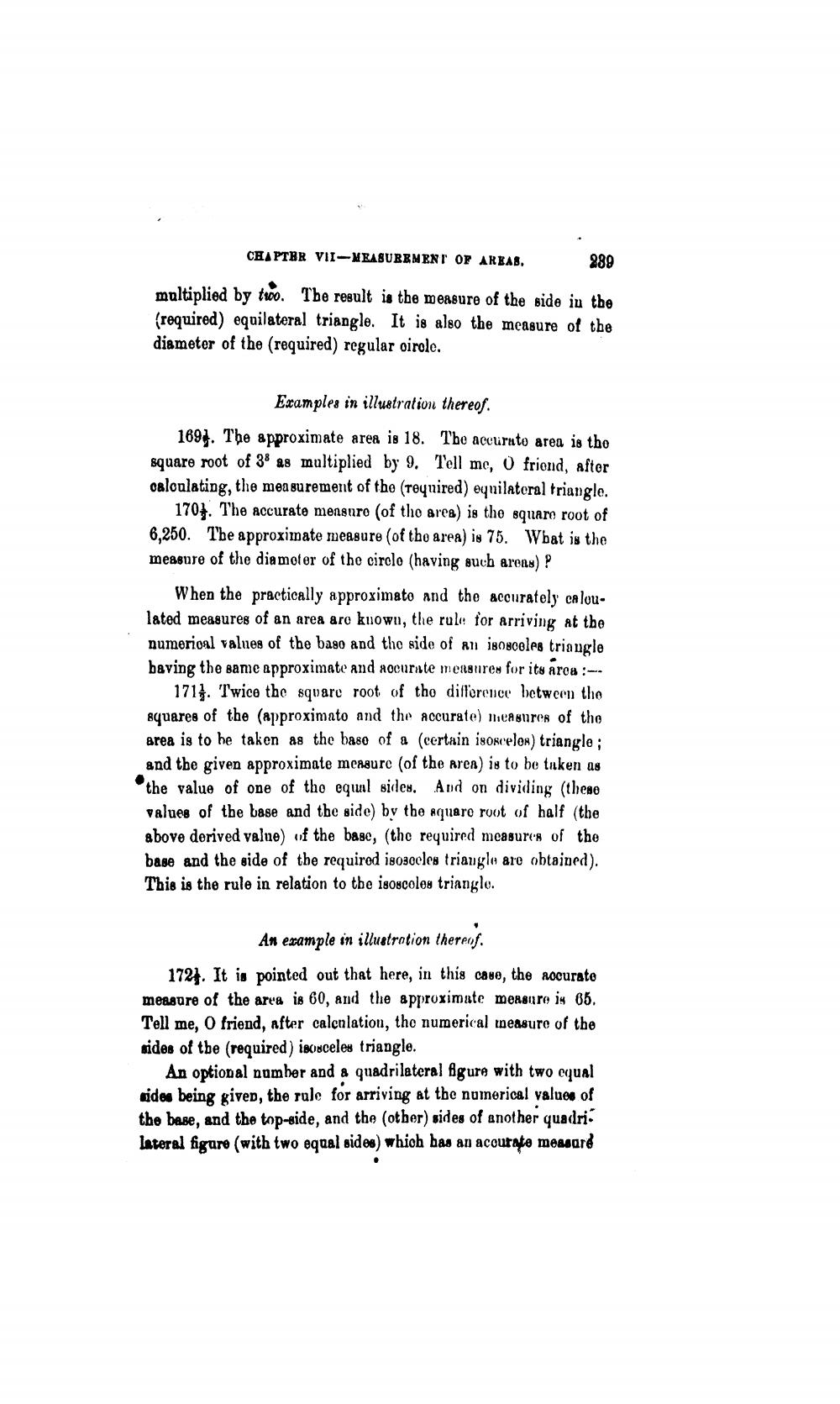________________
CHAPTER VII-MEASUREMENT OF AREAS.
289
multiplied by two. The result is the measure of the side in the (required) equilateral triangle. It is also the measure of the diameter of the (required) regular oircle.
Examples in illustration thereof.
169. The approximate area is 18. The accurate area is the square root of 38 as multiplied by 9. Tell me, O friend, after calculating, the measurement of the (required) equilateral triangle. 170. The accurate measure (of the area) is the square root of 6,250. The approximate measure (of the area) is 75. What is the measure of the diameter of the circle (having such areas) ?
When the practically approximate and the accurately caloulated measures of an area are known, the rule for arriving at the numerical values of the baso and the side of an isosceles triangle baving the same approximate and accurate measures for its arca :--
171. Twice the square root of the difference between the squares of the (approximato and the accurate) measures of the area is to be taken as the base of a (certain isosceles) triangle; and the given approximate measure (of the area) is to be taken as the value of one of the equal sides. And on dividing (these values of the base and the side) by the square root of half (the above derived value) of the base, (the required measures of the base and the side of the required isosceles triangle are obtained). This is the rule in relation to the isosceles triangle.
An example in illustration thereof.
1724. It is pointed out that here, in this case, the accurate measure of the area is 60, and the approximate measure is 65. Tell me, O friend, after calculation, the numerical measure of the sides of the (required) isosceles triangle.
An optional number and a quadrilateral figure with two equal sides being given, the rule for arriving at the numerical values of the base, and the top-side, and the (other) sides of another quadri lateral figure (with two equal sides) which has an accurate measure




